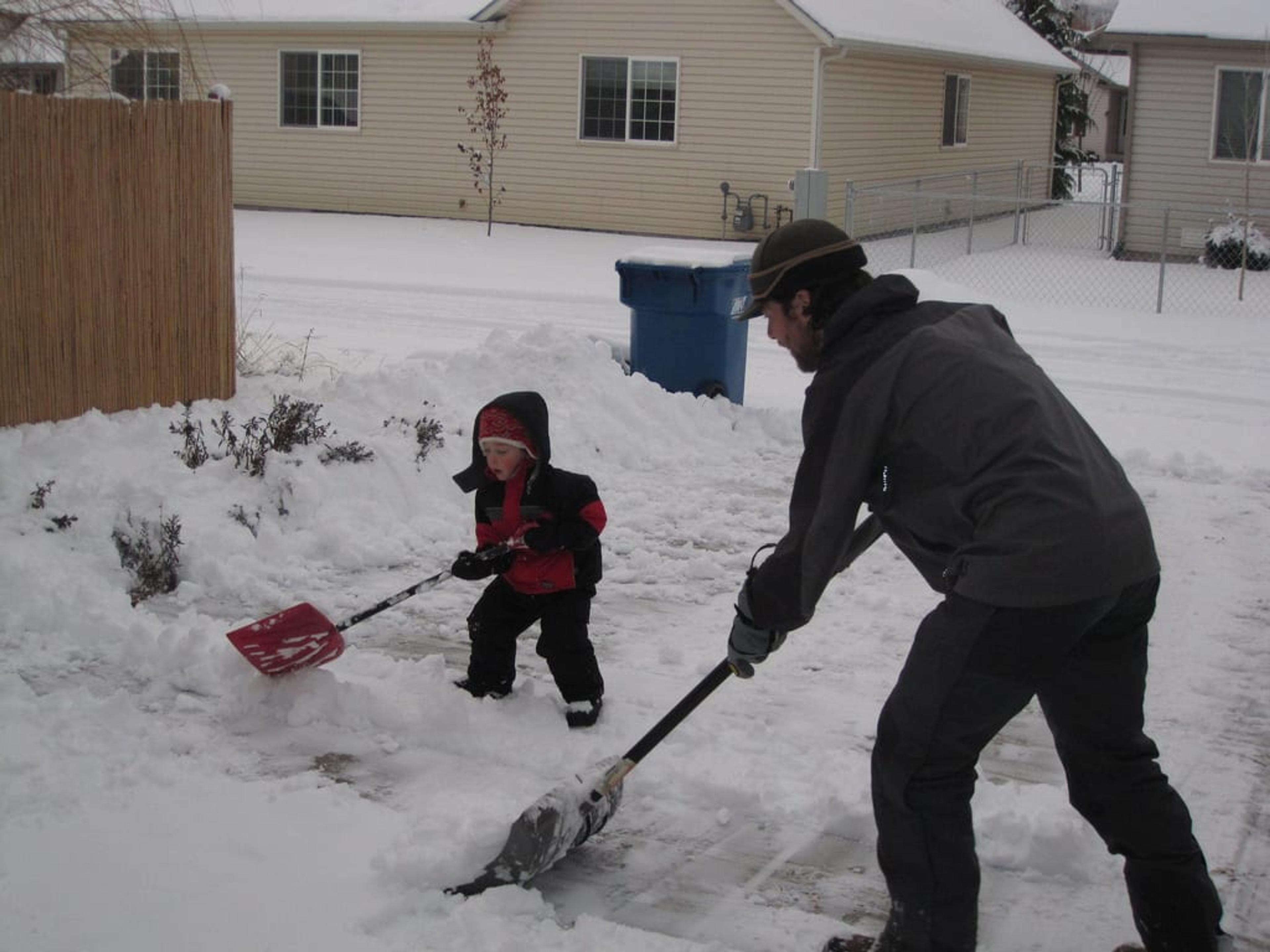Avoid Injury With These 10 Guidelines for Safely Clearing Snow From Your Property
bcbsm
| 4 min read

Michigan winters can unfortunately leave residents susceptible to slip-and-fall accidents. Clearing snow for 15 minutes qualifies as a moderate, physical, daily activity recommended by the U.S. Surgeon General. However, for many sedentary, out-of-shape Americans, shoveling heavy, wet snow for 10 minutes is the equivalent of running on a treadmill to the point of exhaustion.
Studies show major snowstorms are often associated with increased emergency room visits for everything from muscle aches to heart attacks, and the common denominator is snow shoveling. Cold temperatures don’t help. Cold air raises blood pressure in people who don’t normally have a blood pressure problem and poses an even greater risk to people with high blood pressure, according to University of Florida researchers.
If you have any of the following conditions (or a family history), talk to your physician before shoveling snow:
- A history of heart problems, heart disease or previous heart attack
- Previous experience with back problems or asthma
- High blood pressure
- High cholesterol level
- Past history of smoking or are a current smoker
- Lack of daily, dedicated physical activity
For healthy, active individuals, Blue Cross Blue Shield of Michigan (BCBSM) suggests the following snow shoveling guidelines:
Use the right shovel: Shovels with S-shaped handles and non-stick blade surfaces usually require less effort and minimize chances of back pain that could result from improperly bending or twisting. Remember - pushing or pulling snow out of the way requires less exertion.
Avoid stimulants: that can raise your heart rate and restrict blood vessels (caffeine and nicotine are examples.)
Warm-up by stretching muscles, especially in the morning, before shoveling. Muscles are less susceptible to injury during physical activity after a warm-up.
Drink fluids before and during shoveling, but not coffee (see above). Breathing cold air dehydrates the body.
Dress in layers so you can remove or add outerwear as needed. Wear a scarf or mask and/or goggles, especially in windy or blizzard conditions. Use your scarf around your neck and face to create a “well effect” in order to avoid directly inhaling cold air, which may constrict arteries, decreasing your heart’s oxygen supply. Wear a hat to help keep your body warm. A lot of heat can be lost via the scalp if uncovered in very cold conditions.
Go slow and ease into the work to avoid a sudden load on your heart. An average shovelful of heavy, wet snow weighs 16 to 20 pounds. That means for every 10 minutes of typical shoveling, you’ll be clearing more than 2,000 pounds of the white stuff.
To remove snow, bend from the knees, keep your back straight, lift with your legs and carry — don’t throw — it to the side. Try and avoid heavy lifting by pushing or pulling the snow out of the way when possible. Newly fallen snow is usually lighter, so don’t wait to remove it. Remove heavy snow in two stages: First, skim off the top layer, and then remove the bottom. If snow is too heavy to lift, push or pull it out of the way. Take frequent breaks.
Immediately stop if you feel any sort of pain, discomfort, pressure or squeezing in your chest, stomach upset or discomfort in one or both arms and jaw. No one knows your body as well as you. People with a history of any sort of cardiac condition should check with their physician before shoveling snow or avoid doing it.
Consider hiring a snow removal service, especially if you have a lot to clear.
Be safe when using a snow blower: Follow manufacturer safety precautions and never attempt to clear a clogged or stuck blade or auger unless power is shut off. Avoid wearing anything that easily can get caught in the impeller, such as a long scarf or dangling clothing, laces or ties. Before starting, be sure children and others stand clear to avoid being injured by hidden objects thrown into the air. Just the act of using a snow blower will elevate heart rates, so talk to your doctor if you have a history of heart problems.
Let someone know when you will be shoveling so that they can help in the event of any unexpected problems that may occur outdoors.
Now and as winter continues, keep heart health in mind and pace yourself when clearing snow from your property throughout the winter.
Photo Credit: Lance Fisher





